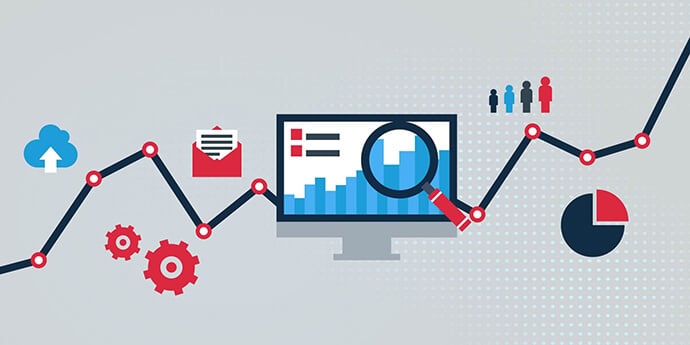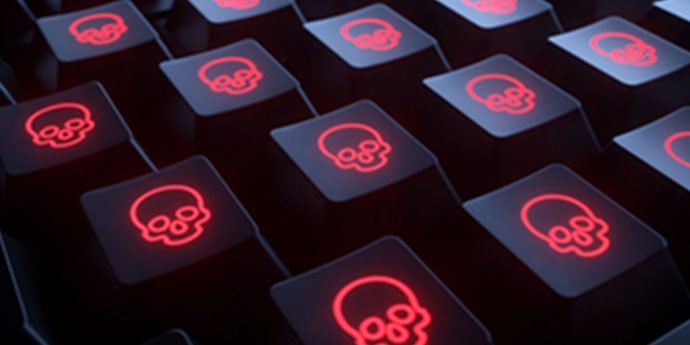
5 Reasons Why You Should Outsource Your SOC
Discussing the benefits of a security operations centre (SOC), the complexities of building a SOC in-house and 5 reasons why business should outsource their SOC.…




Oliver Pinson-Roxburgh
CEO and Co-Founder
28th March 2023
Businesses are constantly under attack, with hackers continually identifying new vulnerabilities to exploit. Most of the time, businesses are unaware that they are being attacked until it’s too late. Research has shown that the internet is constantly being scanned for systems that have been misconfigured or have known vulnerabilities to exploit. Therefore, it’s crucial for businesses to be aware of cybercriminal activity, reducing exposure time, and preventing attacks before they cause irreparable damage. However, this is easier said than done, and can often be expensive and time consuming. Two thirds of organizations will increase their cybersecurity spend over 2023, so it's important to first understand what solutions will provide the most value before investing the time and budget.
One solution to help businesses improve visibility over their digital landscape and provide a proactive approach to stopping cyber threats is to invest in a managed SIEM (Security Information and Event Management), managed SOC (Security Operations Centre), or MDR (Managed Detection and Response) solution. In this blog, we explore what they are, what makes them different, and how they can bring value to your business.
SIEM is a tool that helps businesses keep track of what is happening in their IT environments. This is done by collecting logs and other data from servers, endpoints, cloud systems and other devices to provide real-time alerts for suspicious activity in an environment. These alerts can then be used to take remedial actions before threats turn into breaches.
A SIEM solution does a lot of the hard work to highlight security issues, however SIEM is just the technology – it needs security analysts (usually as part of a SOC team) to configure, investigate and review the alerts in order to properly highlight threats.
There are three core things a SIEM tool does:

A Security Operations Centre (SOC) combines people, processes and technology. In a SOC team you will find a group of analysts monitoring the output of tools like endpoint protection software, firewalls, switches and other products and services, all integrated by a SIEM solution. The role of the SOC is to proactively detect and highlight cyberattacks to businesses to ensure they mitigate the risk before they experience a breach again. The SOC team will notify customers or colleagues of the threat, help triage the incident and provide remediation advice.
A managed SOC service typically involves outsourcing your SOC team to a third party, who will operate and maintain your existing SIEM deployment. This is becoming much less common in the market, as this type of solution requires the vendor to already have a working knowledge of your particular SIEM solution and how it has been deployed. The challenge is that these vendors will often only be able to integrate with and add value to particular SIEM technologies, which may not match with your existing deployment.
As SIEM tools rely on security experts monitoring the alerts it generates, businesses often prefer to choose a managed SIEM service instead. This is where a vendor will deploy their own SIEM technology and combine it with their own SOC team to detect cyber threats 24/7 on your behalf. As many businesses don’t have the experience or budget to build and manage a SOC in-house, outsourcing is the more affordable and valuable option, delivering greater ROI and security coverage.
It's important to note that a managed SIEM solution detects threats, raises alerts and provides remediation advice. This type of service doesn’t typically respond to threats or remediate issues on your behalf. There’s another acronym for that, and it’s called MDR!
MDR stands for Managed Detection and Response and combines technology and human expertise to detect and respond to advanced threats through mitigation and containment. The purpose of an MDR service is to detect cyber threats and respond to them before they become breaches. If a breach does occur, an MDR service will help contain the threat whilst allowing more time for security analysts to investigate and minimise the business impact.
At its core, MDR services deliver holistic end-to-end management of cyber threats. This is a new approach as it adds the ‘response’ element that traditional SIEM tools lack. MDR combines the best of SIEM and SOC to protect your business in real-time and reduce the time it takes to detect and respond to threats. It’s estimated that by 2025, half of organizations will be using MDR services because of this.
MDR uses a SIEM as one of its core technologies, but it takes this to the next level, as it’s not just about correlating log events but about enriching that data and combining results from many different sources, and providing much needed mitigation and containment out of the box.
The key differentiator between an MDR solution and a managed SIEM service is that MDR also helps to respond to security events, in addition to detecting and investigating them. For example, if a SOC analyst has enough data to suggest that an endpoint has been compromised, with an MDR solution they can take action and isolate the device from the rest of the network to contain the threat. In a managed SIEM service, this action would typically need to be taken by your own team.
We’ve talked before about how outsourcing a SOC is almost always the right option compared to building one in-house. But should you get your own SIEM or choose a managed service? Picking the right solution for you is important as every business differs in its requirements and resources.
SIEM is good for businesses that:
Outsourced services like managed SIEM are good for businesses that:
MDR takes this one step further and help businesses proactively respond to threats and assist with incident response where required.
Implementing an MDR, SOC or SIEM solution gives your business a much better chance at keeping your networks secure and preventing breaches.
To summarise, here’s why businesses may need an MDR, managed SIEM or SOC solution:

Oliver Pinson-Roxburgh
CEO and Co-Founder
Share this article

Discussing the benefits of a security operations centre (SOC), the complexities of building a SOC in-house and 5 reasons why business should outsource their SOC.…

Read our introductory guide for everything you need to know about log monitoring. What it is, how it works, and why it is important for your UK business.…

Discover the dangers of retaining user access when employees leave the company and how to manage your risk of data breaches and cyberattacks.…

Find out how ransomware works and read top tips for defending against attacks by securing your UK business with employee training and endpoint protection tools.…
Get actionable cyber security advice and insights straight to your inbox.